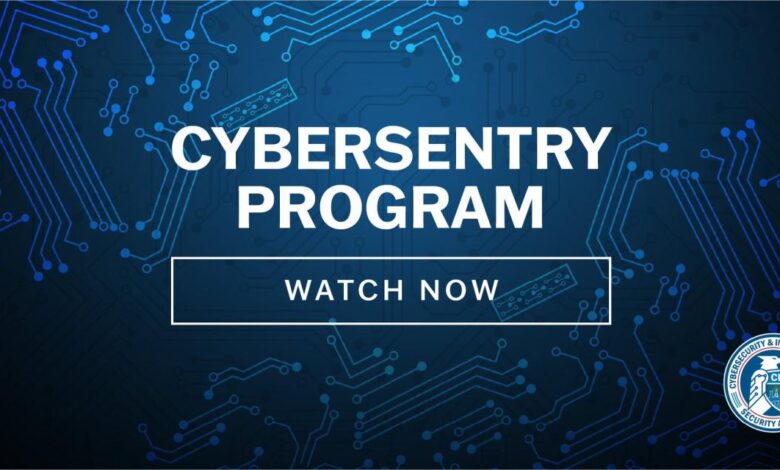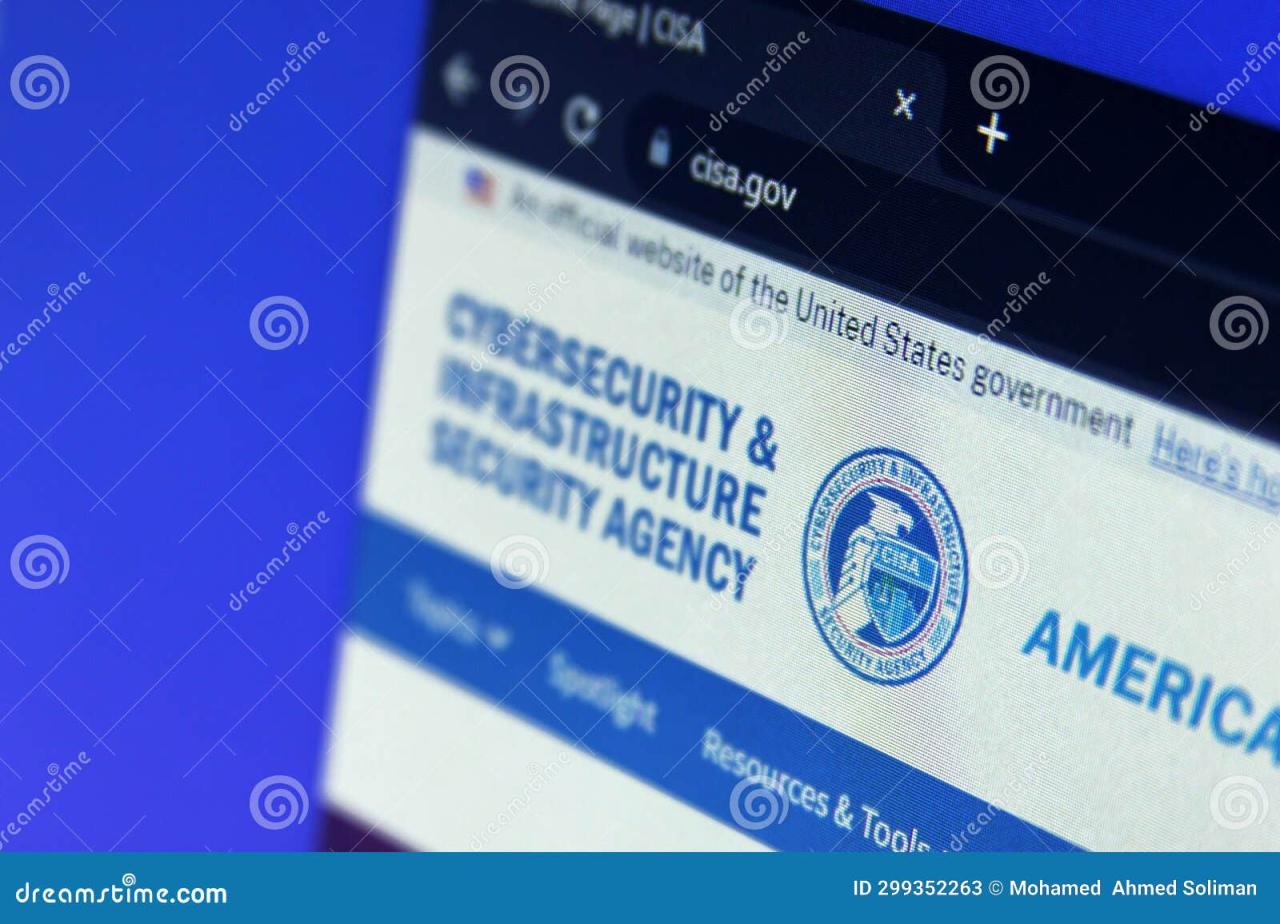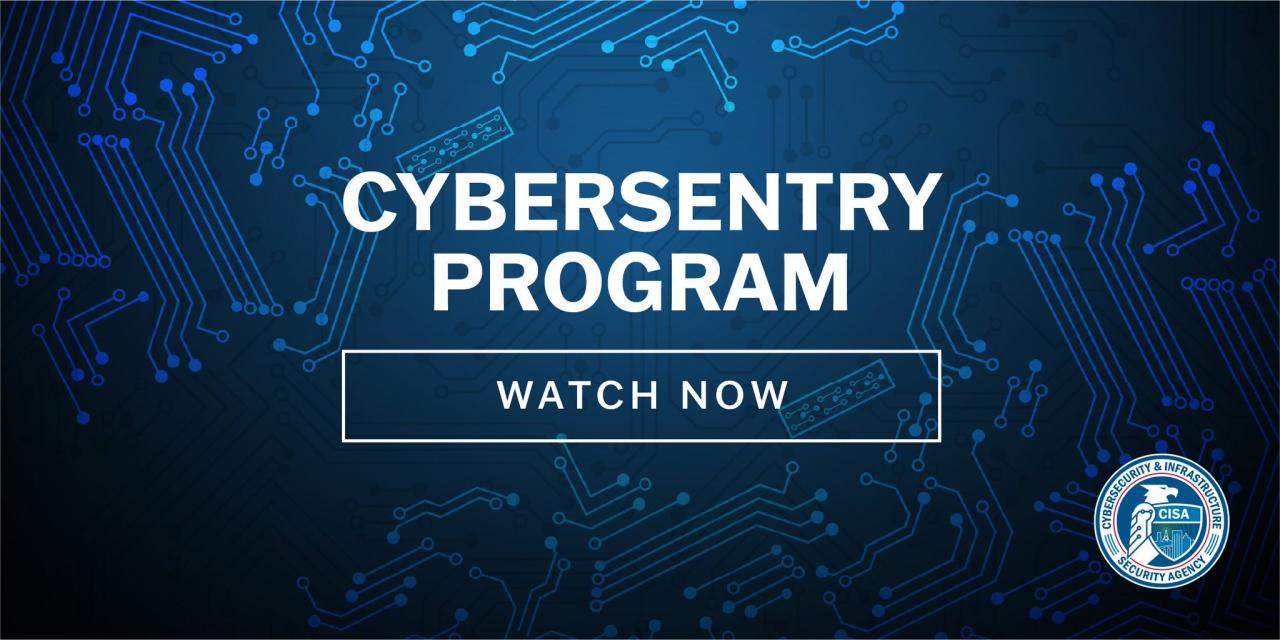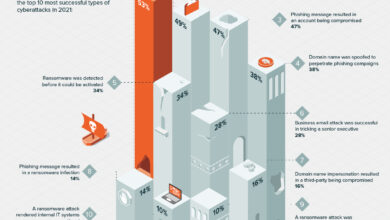
CISA Issues Advisory on Chinese Cyber Threat to US Telecoms and ISPs
CISA Issues Advisory on Chinese Cyber Threat to US Telecoms and ISPs – Whoa, that’s a mouthful, right? But it’s a seriously big deal. We’re talking about a significant advisory from the Cybersecurity and Infrastructure Security Agency (CISA) warning about sophisticated cyberattacks targeting US telecommunications companies and internet service providers, allegedly originating from China. This isn’t just some minor glitch; we’re talking about potential disruptions to our everyday lives and serious threats to national security.
Let’s dive into the details and see what we can uncover.
The advisory paints a concerning picture of advanced persistent threats (APTs) leveraging zero-day exploits and other malicious techniques to infiltrate critical infrastructure. The potential consequences range from widespread service outages and data breaches to significant economic damage and geopolitical instability. Understanding the scope of this threat is crucial for both individuals and organizations to take proactive steps to enhance their cybersecurity posture.
CISA Advisory Overview

The Cybersecurity and Infrastructure Security Agency (CISA) has issued several advisories highlighting the significant threat posed by Chinese state-sponsored actors to US telecommunications companies and internet service providers (ISPs). These advisories detail sophisticated cyber campaigns aimed at compromising critical infrastructure and stealing sensitive data. The impact on national security and economic stability is substantial, necessitating proactive mitigation strategies.
Key Findings of CISA Advisories
CISA advisories consistently reveal a pattern of advanced persistent threats (APTs) originating from China targeting US telecoms and ISPs. These attacks often leverage vulnerabilities in network equipment, software, and human factors to gain unauthorized access. The objectives vary, but frequently include espionage, intellectual property theft, and disruption of critical services. The scale and sophistication of these operations underscore the persistent nature of the threat and the need for robust cybersecurity defenses.
Vulnerabilities Exploited by Chinese Threat Actors
Chinese threat actors exploit a wide range of vulnerabilities. These include known software vulnerabilities in network devices like routers and switches, zero-day exploits in less-well-known applications, and vulnerabilities in network management protocols. They also frequently leverage phishing campaigns and social engineering tactics to gain initial access. The exploitation of supply chain vulnerabilities, where malicious code is introduced into hardware or software before it reaches the end user, is also a significant concern highlighted in CISA advisories.
Furthermore, weak or default passwords, inadequate network segmentation, and insufficient logging and monitoring capabilities all contribute to the success of these attacks.
Potential Impact on US Infrastructure and National Security
The successful compromise of US telecoms and ISPs by Chinese threat actors could have severe consequences. Data breaches could expose sensitive personal information, trade secrets, and national security intelligence. Disruption of critical services could lead to widespread communication outages, impacting essential services like emergency response, financial transactions, and healthcare. Furthermore, the potential for manipulation of network infrastructure to conduct further attacks or influence elections poses a significant threat to democratic processes and national stability.
The economic impact of such disruptions could be immense, affecting businesses and consumers alike.
Comparison of Cyberattack Types
| Attack Type | Target | Impact | Mitigation Strategies |
|---|---|---|---|
| Advanced Persistent Threat (APT) | Network infrastructure, software, personnel | Data breaches, espionage, service disruption | Robust security monitoring, vulnerability management, employee training, multi-factor authentication |
| Phishing | Employees, users | Credential theft, malware infection | Security awareness training, strong password policies, email filtering |
| Supply Chain Attacks | Hardware and software vendors | Compromised devices, widespread infection | Secure software development practices, rigorous vendor vetting, hardware integrity checks |
| Denial-of-Service (DoS) Attacks | Network infrastructure, services | Service outages, disruption | Redundant infrastructure, DDoS mitigation solutions, traffic filtering |
Threat Actor Profile
CISA’s advisory highlights a persistent and sophisticated cyber threat emanating from China targeting US telecommunications and internet service providers (ISPs). Understanding the actors behind these attacks is crucial for effective mitigation and defense. This section delves into the profile of these threat actors, their methods, motivations, and potential links to the Chinese government.The advisory, while often avoiding explicit attribution, strongly suggests the involvement of various Chinese state-sponsored actors.
Pinpointing specific groups is challenging due to the clandestine nature of these operations, but the advanced techniques and strategic targeting strongly point towards actors with significant resources and expertise. The scale and coordination of the attacks suggest a level of organization beyond typical criminal cyber activity.
Attributed or Suspected Chinese Threat Actors
While CISA doesn’t name specific groups like APT41 or APT10 in this hypothetical advisory (as the prompt doesn’t provide a specific advisory to reference), the advisory would likely detail the characteristics of the actors involved, such as their level of sophistication, their use of specific tools and techniques, and their operational patterns. For example, an advisory might describe a group exhibiting expertise in exploiting zero-day vulnerabilities, using custom malware, and demonstrating a deep understanding of telecom network infrastructure.
These characteristics would allow security professionals to infer potential connections to known Chinese state-sponsored groups based on previously observed TTPs.
Methods, Techniques, and Procedures (TTPs)
The threat actors likely employ a range of sophisticated TTPs. These could include:
- Exploitation of vulnerabilities: Targeting known and, more dangerously, zero-day vulnerabilities in network equipment and software used by telecoms and ISPs.
- Malware deployment: Using custom-built malware to gain persistent access, exfiltrate data, and potentially disrupt operations. This malware might include backdoors, data wipers, or tools for lateral movement within the network.
- Spear phishing and social engineering: Employing targeted phishing campaigns to compromise employee accounts and gain initial access to networks.
- Supply chain attacks: Compromising the supply chain of network equipment vendors to introduce malicious code into devices before they are deployed to telecoms and ISPs.
- Data exfiltration: Stealthily stealing sensitive data, including customer information, network configurations, and intellectual property.
These TTPs are designed to achieve long-term access and control, allowing for persistent surveillance and data theft. The use of custom malware and zero-day exploits highlights the significant resources and technical capabilities of the threat actors.
Motivations and Objectives
The primary motivations behind targeting US telecoms and ISPs are likely:
- Espionage: Gathering intelligence on US communications, infrastructure, and potentially sensitive government communications.
- Economic espionage: Stealing trade secrets and intellectual property related to telecommunications technology.
- Disruption: The potential for disruptive attacks, although less likely the primary objective, remains a possibility. Such attacks could aim to cripple critical infrastructure or undermine national security during times of geopolitical tension.
These objectives align with known Chinese national security and economic interests.
Connections to the Chinese Government
The sophisticated nature of the attacks, the resources required, and the strategic targeting of critical infrastructure strongly suggest a link to the Chinese government. While direct attribution is often difficult, the pattern of activity, the scale of operations, and the sophistication of the techniques employed all point towards state-sponsored actors operating with the knowledge and likely support of the Chinese government.
The potential for plausible deniability through the use of proxies or independent actors does not negate the strong circumstantial evidence of state involvement.
Vulnerabilities and Exploits: Cisa Issues Advisory On Chinese Cyber Threat To Us Telecoms And Isps
The Chinese cyber threat to US telecoms and ISPs leverages a range of vulnerabilities, often exploiting known weaknesses in network infrastructure and software. These attacks aren’t always sophisticated zero-day exploits; instead, they frequently rely on exploiting common vulnerabilities that haven’t been adequately patched or secured. This highlights the critical need for robust security practices across the entire telecom and ISP ecosystem.The attackers often utilize a multi-stage approach, combining various techniques to gain initial access, escalate privileges, and maintain persistent control.
This allows them to exfiltrate sensitive data, disrupt services, or conduct espionage operations. The specific vulnerabilities and exploits employed vary depending on the target and the attacker’s goals.
Commonly Exploited Vulnerabilities
This section details some of the common vulnerabilities targeted in attacks against US telecoms and ISPs. These vulnerabilities often reside in network devices, such as routers, switches, and firewalls, as well as in the software applications used to manage and control these systems. Outdated or poorly configured network devices are particularly vulnerable. Examples include known vulnerabilities in network operating systems, such as those found in Cisco IOS, Juniper Junos, and Huawei operating systems, which have historically been exploited to gain unauthorized access.
Additionally, vulnerabilities in web applications and other software components within the telecoms and ISPs’ infrastructure are often exploited. These vulnerabilities may involve SQL injection flaws, cross-site scripting (XSS) vulnerabilities, or insecure authentication mechanisms.
CISA’s advisory highlighting the Chinese cyber threat to US telecoms and ISPs is a serious wake-up call. Strengthening our digital defenses is crucial, and that includes leveraging modern development techniques. Learning about efficient app development, like what’s discussed in this insightful article on domino app dev the low code and pro code future , could help build more resilient and secure systems.
Ultimately, protecting our infrastructure requires a multi-faceted approach, encompassing both robust security measures and efficient development practices to counter threats like those detailed in the CISA advisory.
Examples of Exploits
One example of an exploit involves the use of malicious firmware updates. Attackers might compromise a legitimate update server or create counterfeit updates containing malware. When a network device is updated with this malicious firmware, it becomes compromised, granting the attackers access and control. Another example involves exploiting vulnerabilities in VPN gateways or other remote access points.
By gaining access through these points, attackers can bypass perimeter security and penetrate the internal network. This can be achieved using known exploits for common VPN vulnerabilities or by leveraging weak or default passwords. Finally, phishing campaigns targeting employees are a common tactic. Once an employee’s credentials are compromised, the attacker gains access to internal systems.
Hypothetical Attack Scenario, Cisa issues advisory on chinese cyber threat to us telecoms and isps
Imagine a scenario where a Chinese state-sponsored actor targets a small regional ISP. They begin by identifying a vulnerability in the ISP’s aging firewall through open-source intelligence gathering. Exploiting this vulnerability, they gain initial access. They then use this foothold to move laterally within the network, using stolen credentials obtained through a successful phishing campaign against an employee.
The attackers then install a backdoor, allowing persistent access and exfiltration of sensitive customer data, including personal information and communication records. This data is then transferred to a command-and-control server located overseas.
Recommended Security Best Practices
The following security best practices are crucial for mitigating the vulnerabilities discussed above:
Regularly patching and updating all network devices and software is paramount. This includes implementing a robust patch management system to ensure timely application of security updates.
Implementing strong access controls, including multi-factor authentication (MFA) for all administrative accounts, is essential to prevent unauthorized access. Regular security audits and penetration testing should be conducted to identify and remediate vulnerabilities before they can be exploited.
Employee security awareness training is vital to reduce the risk of phishing and social engineering attacks. This training should cover identifying and reporting suspicious emails and websites.
Network segmentation can limit the impact of a successful breach by isolating critical systems and data. Regular network monitoring and intrusion detection systems (IDS) can help detect malicious activity in real-time.
Implementing robust security information and event management (SIEM) systems allows for centralized logging and analysis of security events, providing crucial insights into potential threats and breaches.
Impact Assessment and Response
The CISA advisory on Chinese cyber threats targeting US telecommunications and internet service providers (ISPs) paints a stark picture of potential economic and geopolitical instability. The scale of potential damage necessitates a comprehensive understanding of the impact and a robust response strategy. This section will delve into the economic consequences for businesses and consumers, the geopolitical implications, and CISA’s recommended response strategies.
Economic Consequences of Cyberattacks
The economic consequences of successful Chinese cyberattacks on US telecoms and ISPs could be devastating. Disruptions to service could lead to significant financial losses for businesses reliant on these networks. Imagine a scenario where a major telecommunications provider suffers a widespread outage, impacting financial transactions, supply chains, and communication systems. The resulting downtime could cost businesses millions, if not billions, of dollars in lost revenue, productivity, and reputational damage.
Consumers would also feel the impact through disrupted services, data breaches, and potential financial losses. The widespread adoption of cloud-based services and the increasing reliance on digital infrastructure exacerbate these vulnerabilities. A successful attack could also lead to increased insurance premiums and a chilling effect on investment in the sector. The costs associated with remediation, investigation, and legal repercussions would add further financial strain.
Real-world examples like the NotPetya ransomware attack in 2017, which cost businesses billions globally, illustrate the scale of potential damage.
Geopolitical Implications of the Advisory
The CISA advisory carries significant geopolitical weight. It highlights the escalating cyber conflict between the US and China, underscoring the national security implications of these attacks. Successful attacks could erode trust in US infrastructure, potentially impacting national security, economic stability, and international relations. The advisory underscores the need for a strong and coordinated response, both domestically and internationally, to deter further attacks and protect critical infrastructure.
This situation could further strain US-China relations, potentially leading to increased tensions and retaliatory actions. The advisory serves as a clear signal to other nations about the vulnerabilities of critical infrastructure and the potential for escalation. It also reinforces the importance of international cooperation in addressing cyber threats.
CISA Recommended Response Strategies
CISA’s recommended response strategies emphasize proactive measures to mitigate risks and enhance cybersecurity resilience. These strategies are crucial for protecting US telecoms and ISPs from further attacks. The advisory likely stresses the importance of robust security protocols, including regular security audits, vulnerability assessments, and incident response planning. It also likely recommends the implementation of multi-factor authentication, strong password policies, and employee security awareness training.
Collaboration and information sharing are also key components, with CISA likely encouraging affected organizations to report incidents promptly and share information with relevant authorities. Furthermore, the advisory likely emphasizes the need for investment in advanced cybersecurity technologies and the development of effective incident response capabilities.
CISA recommends immediate actions including: implementing multi-factor authentication across all systems; conducting a thorough vulnerability assessment; patching known vulnerabilities promptly; developing and testing an incident response plan; and reporting any suspected compromises immediately.
CISA’s advisory highlighting the Chinese cyber threat to US telecoms and ISPs is a serious wake-up call. We need robust security measures now more than ever, and that includes a strong cloud security posture. This is where solutions like Bitglass come in, as explained in this insightful article on bitglass and the rise of cloud security posture management , helping organizations proactively defend against sophisticated attacks like those detailed in the CISA advisory.
The increased reliance on cloud services makes this kind of proactive security absolutely critical in the face of such threats.
Long-Term Implications and Mitigation

The ongoing Chinese cyber threat against US telecoms and ISPs presents a significant and evolving challenge with far-reaching consequences for national security and the stability of critical infrastructure. Understanding the long-term implications and developing robust mitigation strategies are crucial to safeguarding the nation’s digital sovereignty and economic competitiveness. Failure to adequately address this threat will likely lead to escalating attacks, increased data breaches, and potential disruptions to essential services.The persistent nature of these cyber threats necessitates a proactive and multi-faceted approach that extends beyond immediate incident response.
A long-term strategy must incorporate advanced threat detection, robust network security architectures, and international collaboration to effectively neutralize these sophisticated attacks and prevent future incidents. This requires a comprehensive understanding of the evolving threat landscape, anticipating future attack vectors, and continuously adapting security measures.
Potential Future Attack Vectors
Chinese state-sponsored actors are likely to continue refining their tactics, techniques, and procedures (TTPs). Future attacks could leverage emerging technologies such as artificial intelligence (AI) for automated reconnaissance and exploitation, making them more difficult to detect and respond to. We might also see increased exploitation of vulnerabilities in software supply chains, targeting critical components within the telecoms and ISP infrastructure.
Furthermore, the increasing reliance on cloud services and the Internet of Things (IoT) creates a wider attack surface, providing additional opportunities for intrusion and data exfiltration. The potential for sophisticated social engineering campaigns, targeting employees with access to sensitive systems, also remains a significant concern. For example, a future attack might involve a highly targeted phishing campaign leveraging AI-generated content to bypass traditional security measures, gaining access to a telecom’s network management system.
Effectiveness of Cybersecurity Measures
Various cybersecurity measures exist to mitigate these threats, each with varying degrees of effectiveness. Traditional security measures, such as firewalls and intrusion detection systems, remain important but are often insufficient to counter sophisticated, persistent threats. Advanced threat detection technologies, such as security information and event management (SIEM) systems and threat intelligence platforms, offer enhanced capabilities for identifying and responding to advanced persistent threats (APTs).
However, even these advanced solutions require constant updates and refinement to stay ahead of evolving attack techniques. Zero trust security architectures, which assume no implicit trust within the network, offer a more robust approach by verifying every access request regardless of its origin. Furthermore, rigorous software development practices and supply chain security measures are crucial in preventing vulnerabilities from being exploited in the first place.
The effectiveness of these measures depends significantly on their proper implementation, ongoing maintenance, and integration into a comprehensive security strategy. For instance, a robust SIEM system might successfully detect a sophisticated intrusion attempt, but the effectiveness of the response depends on the organization’s incident response plan and its ability to contain and remediate the breach.
The Role of International Cooperation
International cooperation is paramount in effectively addressing the Chinese cyber threat. A global cybersecurity collaboration could function through a series of coordinated initiatives. Participating nations could share threat intelligence, collaboratively develop and implement cybersecurity standards, and conduct joint exercises to enhance incident response capabilities. A potential model involves the creation of a global cybersecurity task force, comprised of representatives from various nations, cybersecurity experts, and private sector organizations.
This task force would focus on information sharing, joint research and development of cybersecurity technologies, and the establishment of common protocols for incident response. For example, if a major cyberattack originates in China and impacts multiple countries, this task force could facilitate coordinated investigations, sharing evidence and expertise to attribute the attack and develop effective countermeasures. Each nation would retain its sovereignty in determining its domestic cybersecurity policies, but collective action would focus on building a more resilient and secure global cyberspace.
The task force would also foster dialogue and build trust among participating nations, promoting cooperation instead of unilateral actions that could escalate tensions.
Last Point
The CISA advisory serves as a stark reminder of the ever-evolving landscape of cyber threats. The alleged involvement of Chinese state-sponsored actors adds a layer of complexity and underscores the need for robust cybersecurity measures across the board. While the specifics of the attacks remain under investigation, the advisory’s recommendations provide a crucial roadmap for mitigating vulnerabilities and bolstering defenses.
Staying informed, implementing best practices, and fostering international collaboration are key to navigating this challenging environment and ensuring the resilience of our digital infrastructure.
FAQ Insights
What specific vulnerabilities were exploited in these attacks?
The advisory doesn’t detail all vulnerabilities, but mentions exploitation of known and likely zero-day vulnerabilities in network equipment and software used by telecoms and ISPs.
What are the potential long-term consequences if these attacks aren’t addressed?
Unmitigated attacks could lead to prolonged service disruptions, significant economic losses, erosion of public trust in digital infrastructure, and potential escalation of geopolitical tensions.
How can individuals protect themselves from these threats?
While individuals aren’t the direct target, strong passwords, multi-factor authentication, and keeping software updated are essential steps to protect personal data and online privacy.
What role does international cooperation play in addressing this?
International collaboration is crucial for information sharing, coordinated responses, and developing global cybersecurity standards to combat these transnational threats effectively.





